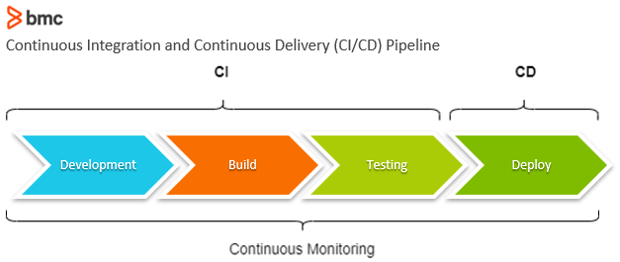DevOps Metrics for Optimizing CI/CD Pipelines


DevOps organizations monitor their CI/CD pipeline across three groups of metrics:
With continuous delivery of high-quality software releases, organizations are able to respond to changing market needs faster than their competition and maintain improved end-user experiences. How can you achieve this goal?
Let’s discuss some of the critical aspects of a healthy CI/CD pipeline and highlight the key metrics that must be monitored and improved to optimize CI/CD performance.
(This article is part of our DevOps Guide. Use the right-hand menu to go deeper into individual practices and concepts.)

But first, what is CI/CD and why is it important?
Continuous Integration (CI) refers to the process of merging software builds on a continuous basis. The development teams divide the large-scale project into small coding tasks and deliver the code updates iteratively, on an ongoing basis. The builds are pushed to a centralized repository where further automation, QA, and analysis takes place.
Continuous Delivery (CD) takes the continuously integrated software builds and extends the process with automated release. All approved code changes and software builds are automatically released to production where the test results are further evaluated and the software is available for deployment in the real world.
Deployment often requires DevOps teams to follow a manual governance process. However, an automation solution may also be used to continuously approve software builds at the end of the software development (SDLC) pipeline, making it a Continuous Deployment process.
(Read more about CI/CD or set up your own CI/CD pipeline.)
Now, let’s turn to actual metrics that can help you determine how mature your DevOps pipeline is. We’ll look at three areas.
In regard to delivering high quality software, infusing performance and security into the code from the ground up, developers should be able to write code that is QA-ready.
DevOps organizations should introduce test procedures early during the SDLC lifecycle—a practice known as shifting left—and developers should respond with quality improvements well before the build reaches production environments.
DevOps organizations can measure and optimize the performance of their CI/CD pipeline by using the following key metrics:
Automation is the heart of DevOps and a critical component of a healthy CI/CD pipeline. However, DevOps is not solely about automation. In fact, DevOps thrives on automation adopted strategically—to replace repetitive and predictable tasks by automation solutions and scripts.
Considering the lack of skilled workforce and the scale of development tasks in a CI/CD pipeline, DevOps organizations should maximize the scope of their automation capabilities while also closely evaluating automation performance. They can do so by monitoring the following automation metrics:
DevOps organizations are expected to improve performance without disrupting the business. Considering the increased dependence on automation technologies and a cultural change focused on rapid and continuous delivery cycles, DevOps organizations need consistency of performance across the SDLC pipeline.
Dependability of infrastructure underlying high performance CI/CD pipeline responsible for hundreds (at times, thousands) of delivery cycles on a daily basis is therefore critical to the success of DevOps. How do you measure the dependability of your IT infrastructure?
Here are a few metrics to get you started:
With these metrics reliably in place, you’ll be ready to understand how close to optimal you really are.